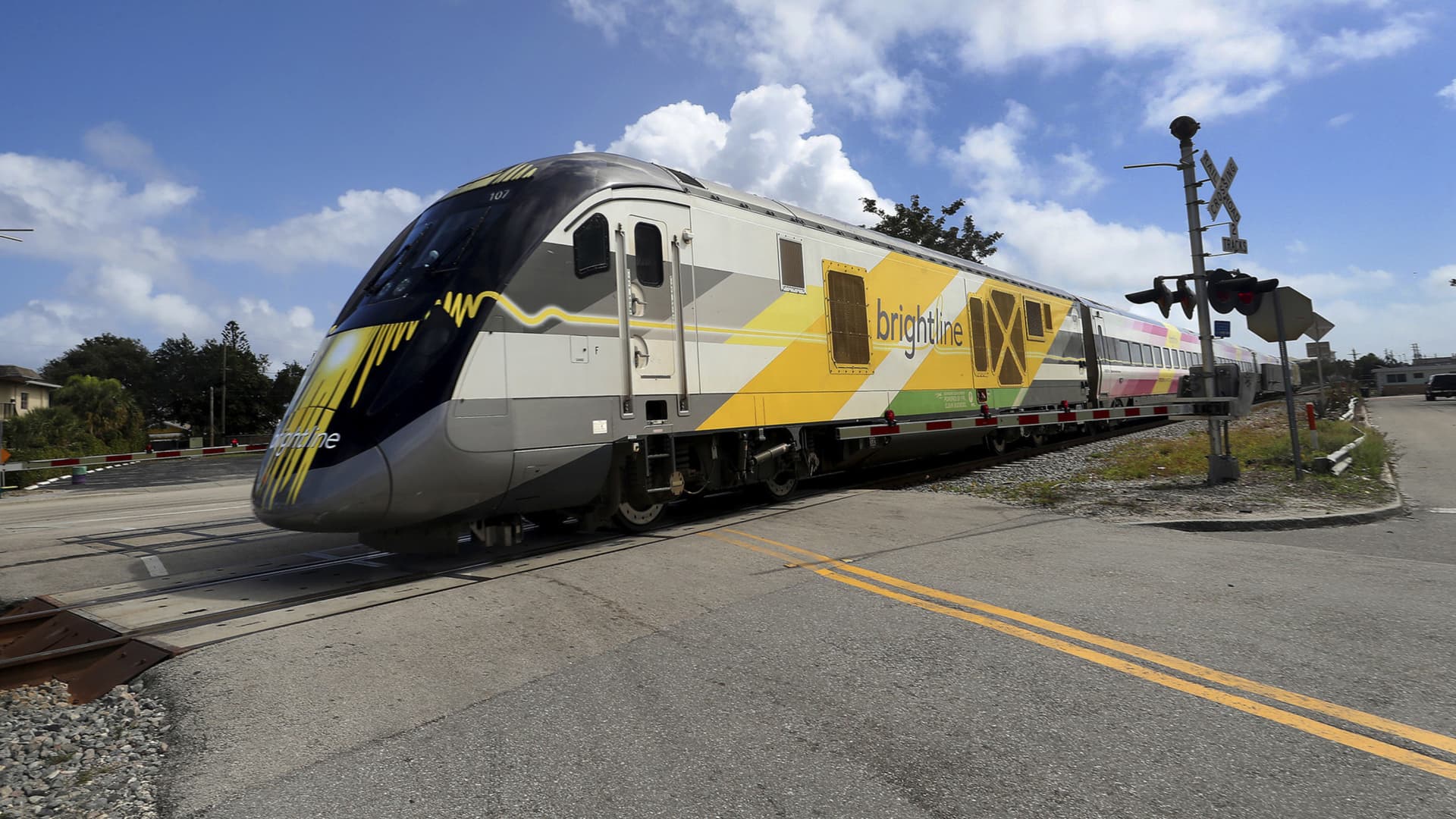When it comes to passenger rail in the the U.S., Americans have one option — Amtrak, which is often plagued with high ticket prices and delays. But one Florida-based company is working on changing that. Brightline, which is owned by Fortress Investment Group, thinks that privatized passenger rail in the U.S. could be a better way.
Brightline opened a line from Miami to West Palm Beach in 2018. It was the first privately funded passenger rail built in the U.S. in over 100 years. It will open up an expansion line to Orlando in late August. The total project cost $6 billion, according to Brightline.
“When you look at all the city pairs that exist, the places around the country that would be attractive to you, Miami to Orlando jumps off the top of the page,” said Wes Edens, co-founder and principal of Fortress Investment Group and the mastermind behind Brightline. “It’s kind of a lousy drive between them. It’s this 230 mile trip between the two places with lots and lots of trouble in between.”
The company expects to transport 8 million people per year in Florida once it is fully operational.
“At those levels of ridership, we’re going to be a very profitable organization,” said Mike Reininger, CEO of Brightline.
Brightline is also making strides to create the first dedicated high-speed passenger rail line in the U.S. connecting Los Angeles to Las Vegas. It’s hoping to break ground later this year.
“We are planning to make our project, as I call it, the blueprint for America’s high-speed rail industry. And so what that means is we are building in America, we are utilizing American union labor, and we’ll create about 35,000 construction related jobs and 1,000 permanent jobs that are localized within the region that we’re building in,” said Sarah Watterson, president of Brightline West.
Brightline is aiming to finish the line before the LA 2028 Olympics. The project is expected to cost $12 billion. It’s looking to cover about a third of the cost, $3.75 billion, with a federal grant requested in partnership with the Nevada Department of Transportation.
“It is possible for private companies to deliver high speed rail and also to do it well. It seems less possible on the basis of the evidence we have, which generally show that private companies also are not able to make high-speed rail financially viable. So there needs to be a subsidy somewhere,” said Bent Flyvbjerg, co-author of “How Big Things Get Done.”
